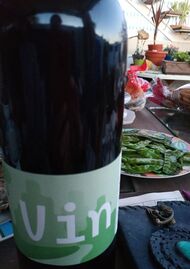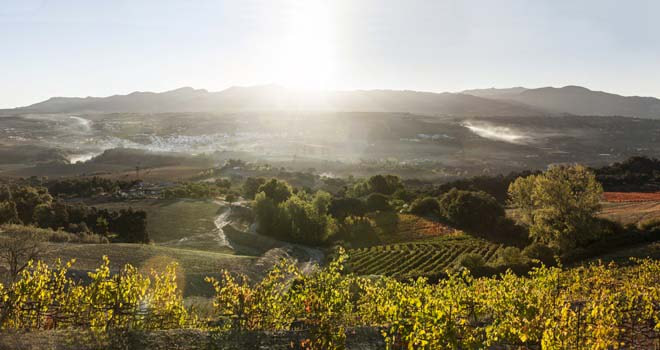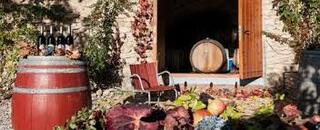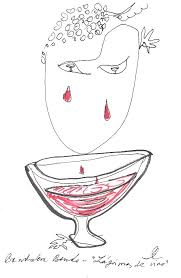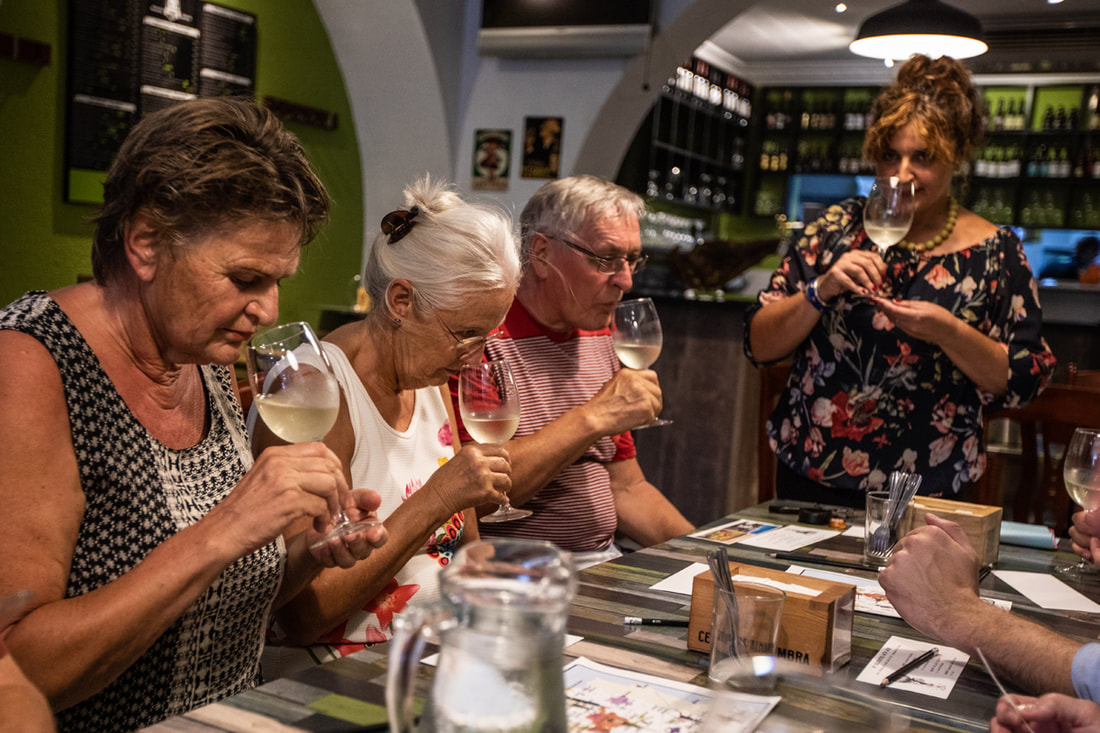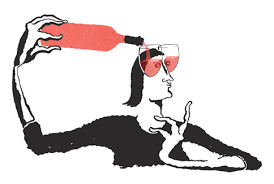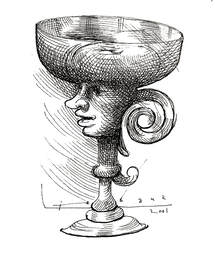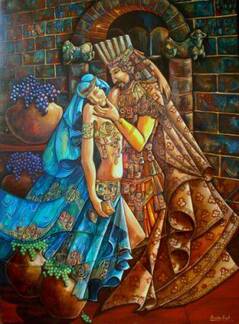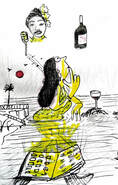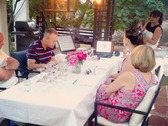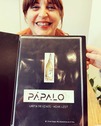 7 VIN Blau & Zwei 2015 Organic and biodynamic limited release brand red wine, made with the Austrian varieties Blaufraenkisch 50% and Zweilgt 50%. Aged with 13 months in French and American oak barrels, removing the lees for the first 4 months. Kieninger Winery. Partida Rural Los Frontones. Ronda (Malaga). D.O. Sierras de Málaga. TERROIR: The soil of the vineyard is loamy, clayey-calcareous with enough sand to have a good drainage function. At 800 meters high. Orientation South-East. Located at gentle slopes, protected from the North. The place is surrounded by centenary oaks, maroons, blackberries, quinces and hawthorn. The treatments of the plants in the vineyard are done through biological means and maturation is carried out in a cellar in stone and underground, following the traditional style of natural fermentation. TASTING: The first pleasant surprise has been the uncorking, as I find a quality cork, hyper-perfumed and elegantly signed. When serving the glasses, strikes me by the colour of its foam, very tinged to be aged and a beautiful crimson colour, I imagine it is characteristic of these grapes... I decide to skip the first phase, the visual and after having awakened the wine, we analyze its aroma and palate after being so long stored and thus get retronasal before the seduction of rest disappears. A touch of acidity clearly appears, which evaporates when pairing. Spiced hints: black pepper and some nutmeg. Cocoa and the woody part of the grape cluster coming through. On the palate, cassis, a touch of green pepper, graphite and truffle. Very high robe and subtle presence of tears. Sinuous and curvy wine. Original and noble wine. We accompany it with different delicacies, and we agree that the duck confit praises him, opens and maintains the aftertaste of this wine, the grilled aubergine with some truffle shavings and the French potatoes with mojo picón sauce, also enhance its flavour and yet a smoked sheep cheese transforms it... As this wine offers me walks and evolutions... for its musical pairing I bet on Modest Mussorgsky's "Pictures of an Orchestra Exhibition". CURIOSITIES: Being an unprecedented wine for the good adaptation of these Austrian grapes in the Serranía de Ronda, tell you a little about them... The red grape Blaufränkisch is a variety of dark-skinned, late-ripened grapes. It produces wines that are normally rich in tannins and can exhibit a pronounced spicy character. It has the elegance of Pinot Noir, tannic as Nebbiolo and spiced like Syrah. For a long time it has been mistaken with Gamay, although no one has been able to demonstrate a degree of relationship between both. In Germany, this grape is known as Lemberger and in Hungary as Kékfrankos. The Blaufränkisch is the mother of Zweigelt, the most planted red grape variety in Austria, the result of a cross of this with the Saint Laurent. Austrian winemaking is promoted by the Cistercian Monks (so well known in Burgundy, Tuscany and Priorato). Already in the twelfth century some special vineyards for their terroirs stood out in monasteries and abbeys. The 7 VIN, with D.O. Sierras de Málaga is produced in a winery located in the Serranía de Ronda, but it cannot carry its name, since 100% of the grapes from this subzone must be used for its production, and must also meet other specific requirements. LEGEND: Legend has it that on St. Martin's Day, the "new wine" arrives ripe to delight the followers of the Heurigen of the area. After its short winemaking process, from the must, through its important fermentation step, this vibrant and almost brand new young wine lends itself to entertaining thousands of palates. There is also the so-called "Gemischter Satz" which is a blend of white grapes, almost always from Riesling, Gruner Veltliner or Weiss Burgunder. HEURIGEN are wine taverns where young wines are tasted. These taverns were founded by imperial resolution, in August 1789, and it is where every year the new wine is welcomed (Nouveau, Novello, Vineta as you want to call it) from the day of St. Martin (November 11 to December 31). In the Heurigen you can also try the typical dishes of Austrian gastronomy. Knowing a little more about these berries, their origins and customs, I dare say that it has been a good and risky choice by Martin Kieninger, and grateful to be able to taste this annexation.
1 Comentario
To enjoy the wine you don't have to be an expert, but the more we learn from something, the more we enjoy it, right? Through TASTING IN ESSENCE we try to create a conductive thread between the essences of wine and people. "The essence is invariable and permanent and constitutes the nature of things. It is a notion that refers to the characteristic and most important of one thing. The essence is the persistent reality, it will remain intact. The term comes from Latin, which in turn derives from a Greek concept". (bibliographic source) It is also called essence to the concentrated liquid extract of a substance, generally aromatic. The essences can be also perfumes or aromatic substances.  Did you know that the most powerful sense man has for tasting, is smell? Wine is a true aromatic microcosm. The essence of wine is born in the vineyard and in its transformation. In the tasting I always look for the character of the wine according to its profiles terroirs, chromatic, aromatic and taste, emphasizing the evolution and final in mouth. Different wines are compared with their certain accompaniments, I mean pairing, which includes doing it with music too, because I do not conceive the tasting without it... Wines are tested carefully, appreciated and subjected to our senses, in order to achieve satisfaction. Stimulation = organ of the senses = feeling (reflection) = perception (phonetic expression) The wine contains more than 500 chemical substances that when they are in appreciable doses for the human being, stimulate us and reach the brain that evaluates and synthesizes them to compare with previous memories with which it is associated.When the brain recognizes the stimulus caused by the characteristics of the wine, it produces what is called perception: the stimulus becomes an interpretation. Wine tells us many stories and from many perspectives. Some have made reference to the vineyard and its cultivation. Others speak of their origin, of their legends and of the way in which the wine was incorporated into our lives. Sip by sip, discover its mysteries, its myths, its aromas, its perfume, its emotion, its origin, generate inspiration, inhale art, feel that evokes us, and that provokes us, like a painting to contemplate it.
A captivating journey through the culture of wine and its many aspects. A different, exclusive and unforgettable way to fall in love with wine. My Encounters with Wine Mailblog/Tastings Irene Sayas 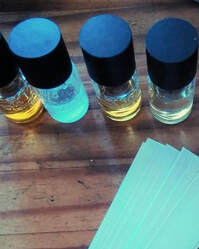 Para disfrutar del vino no hay que ser un experto, aunque cuanto más aprendemos de algo, más lo disfrutamos, ¿verdad? A través de CATA EN ESENCIA se intenta crear un hilo conductor entre las esencias del vino y las personas. “La esencia es aquello invariable y permanente que constituye la naturaleza de las cosas.. Se trata de una noción que hace referencia a lo característico y más importante de una cosa. La esencia es la realidad persistente, se mantendrá intacta. El término proviene del latín essentia, que a su vez deriva de un concepto griego.” (fuente bibliográfica) Se llama también esencia al extracto líquido concentrado de una sustancia, generalmente aromática. Asimismo, las esencias pueden también ser perfumes o sustancias aromáticas. Sabías que el sentido más poderoso con que cuenta el hombre para la cata, es el olfato ? El vino es un verdadero microcosmos aromático. La esencia del vino nace en el viñedo y en su transformación. En la cata siempre busco el carácter del vino según sus perfiles terruños, cromáticos, aromáticos y gustativos, haciendo hincapié en la evolución y final en boca. Se comparan diferentes vinos con sus determinados acompañamientos, me refiero a maridar, que incluye hacerlo con música también, pues no concibo la degustación sin ello… Se prueban los vinos con atención, aprecian y someten a nuestros sentidos, con la finalidad de conseguir satisfacción. Estímulo = Órgano de los sentidos = Sensación (reflexión) = Percepción (expresión fonética) El vino contiene más de 500 sustancias químicas que cuando están en dosis apreciables para el ser humano, nos estimulan y llegan al cerebro que las evalúa y sintetiza para entonces compararlas con recuerdos anteriores y asociarlos a ellos. Cuando el cerebro reconoce el estímulo originado por las características del vino, se produce lo que se llama percepción: el estímulo se convierte en una interpretación. El vino nos cuenta muchas historias y desde muchas perspectivas. Algunas han hecho referencia a la viña y a su cultivo. Otras hablan de su procedencia, de sus leyendas y de la forma en la que el vino se incorporó a nuestras vidas. Sorbo a sorbo, descubrir sus misterios, sus mitos, sus aromas, su perfume, su emoción, su origen, generar inspiración, inhalar arte, sentir que nos evoca, y que nos provoca, como un cuadro al contemplarlo. Un recorrido cautivador por la cultura del vino y sus múltiples vertientes. Una forma diferente, exclusiva e inolvidable de enamorarte del vino. Mis Encuentros con el Vino - Catas de Vino Irene Sayas |
irene sayasEntusiasta y conocedora de la magia del vino. El vino evoca, convoca y provoca... *Archivos:
|
Cómo contactarnos / How to contact usTeléfono 690 073 871 |
Suscribirse / SubscribeÚnete a nuestra lista de correo hoy!
Sign up to our mailing list now! |

